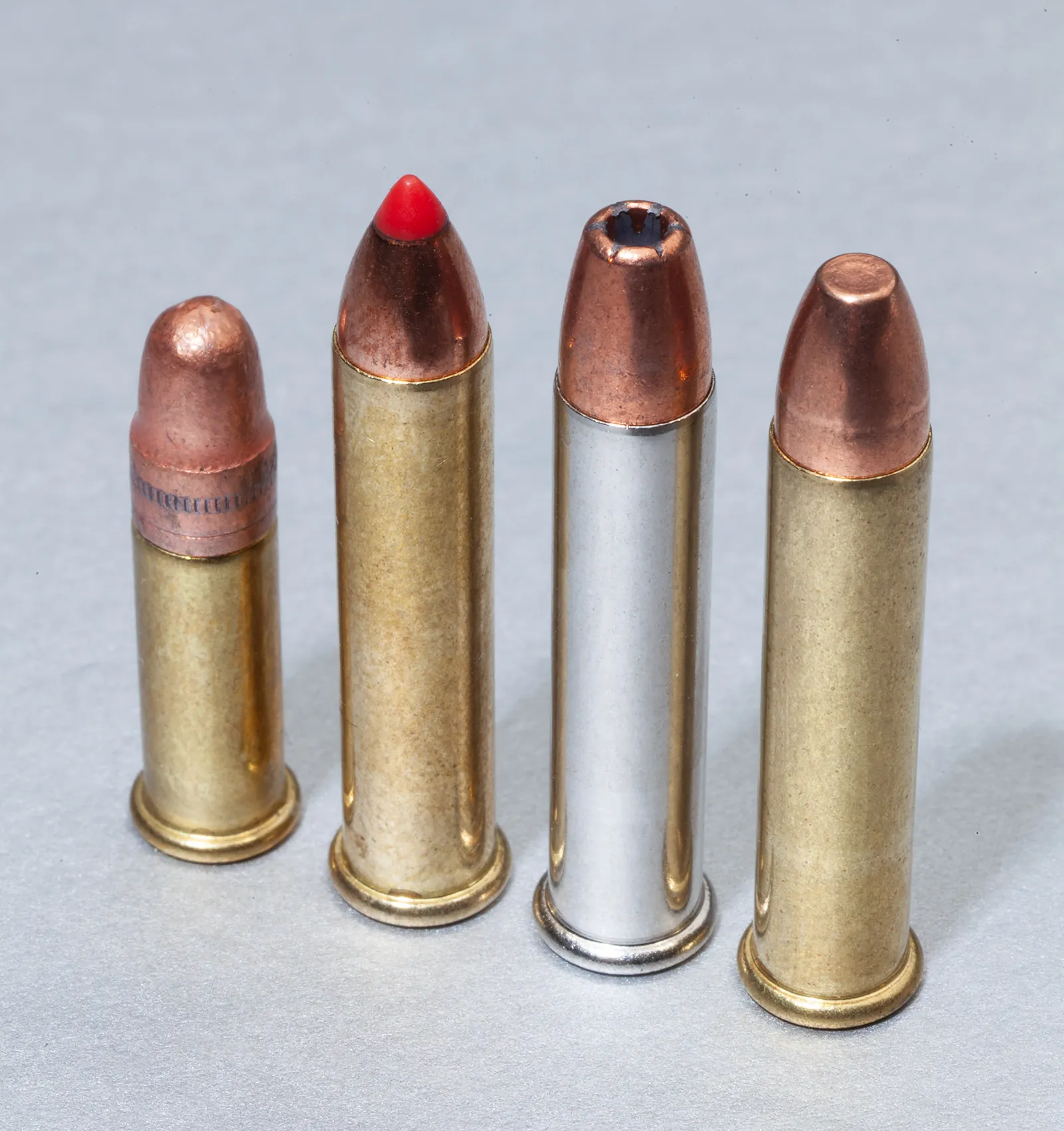Demystifying the .22 Magnum
Ballistics, Accuracy, and Performance

Back when my experience with guns was mostly theoretical, and the longest distance I’d experienced was 25 yards at an indoor range, I recall looking at .22 Magnum and dismissing it as “.22 LR with more noise and a whole lot more expense.” It took longer-range shooting, awareness of terminal ballistics, and actual practical experience with .22 WMR guns to really appreciate it. Speaking in analogies, .22 WMR to .22 LR is what .357 Magnum is to the old .38 S&W.
The origins of this very useful cartridge go back to 1890 when .22 Winchester Rimfire was introduced to compete with the then-recent .22 LR. .22WRF was a development similar to .38 Special, a cartridge with an inside lubricated bullet to replace the older heeled bullet design. Using a longer case than .22 LR, it shot faster despite lower chamber pressure. Being more expensive and somewhat less accurate, .22 WRF lost the popularity contest and remained an oddity. Decades later, in 1959, a longer, higher-pressure version of that round became the famous .22 Magnum. “Higher pressure” meant the same mild 24,000psi as .22 LR, but in a significantly longer case. The 70% difference in case length between .22 LR and .22 WMR mirrored the stretching of .45-70 Gov’t to .45-120, with much the same ballistic gains without an increase in chamber pressure.
The most obvious change from the shorter cartridge is the muzzle velocity, around 50% faster with the same weight bullet. Higher velocity means a flatter trajectory and a more energetic impact, as well as better practical accuracy because the 40gr projectile doesn’t go transonic until 175 to 225 yards, depending on the load. .22 WMR has the same energy at 125 yards as .22 LR does at the muzzle, and it imparts the energy to more sophisticated bullets. Almost all .22 WMR bullets are jacketed, with a wide variety of types available for almost any task. The lightest production load is a 28gr tin-bullet Winchester designed for short-range training, then follow tipped and hollow point 30gr varmint bullets, 40gr target and small game loads, and finally, 45gr defensive and training loads. Although a pair of 45gr loads, Hornady and Federal, are offered with faster powders for pistol use, this cartridge really comes into its own with rifle-length barrels. With ball ammunition, the small cross-section and high kinetic energy give .22 WMR impressively high penetration. In a test on a 3/8″ hardened aluminum plate, .22 Magnum rifle punched through where .357 Mag and 10mm longslide pistols failed. This caliber has been successfully used for culling feral hogs. Conversely, with expanding bullets, 30gr WMR fairly explodes small varmints where bigger, more solidly constructed bullets might pass through without expansion.

The long case lends itself to consistent chamber alignment and good obturation, and jacketed bullets prevent barrel leading. It seems that manufacturing of .22 WMR ammunition is done to a higher standard than most others, as I have not had a single misfire with this caliber in over 7 thousand rounds fired. The same long, skinny case lends itself more to manually operated actions and revolvers than to semi-autos. .22 WMR semi-autos can be made reliable, but it’s much easier to handle extraction once the chamber pressure has dropped. Henry lever and pump action rifles offer 8-10 shot capacity and make the most of the potential offered by this high-velocity cartridge. In particular, the long iron sight radius of Small Game Rifle and Frontier models and optic-optimized Magnum Express enable accurate shot placement to the limit of the ballistic potential of .22 WMR. Accuracy is a function of picking the right load for the specific rifle. Because of the wide variation between .22 WMR chambers from various manufacturers, it pays to try a variety of loads and stick with those that shoot well in specific rifles. I’ve had consistent MOA results from scoped rifles shooting CCI 40gr Maxi-Mag and 50gr Gamepoint. We can expect .22 WMR to be slightly less accurate than .22 LR match loads but get superior practical accuracy thanks to the much flatter trajectory. Effective bullet drop in .22 WMR is just under half of .22 LR.
With rifle-length barrels, .22 WMR isn’t flashy. Much of the noise comes from the supersonic crack rather than the report, and the shockwave expands away from the shooter. For further noise reduction at the shooter’s ear, a 24″ Frontier model is available with a muzzle threaded for a sound suppressor or a linear compensator. Somewhat louder than .22 LR, .22 WMR is tremendously tamer than .223 Rem in report and recoil, making it a better youth hunting cartridge for small game. Ammunition is half as expensive as .223. For prolonged varmint sessions, .22 WMR wins because of greatly reduced barrel heat-up, using 1/3 to 1/4 of .223’s powder loads. While rimfire cases are not easily reloadable, high-quality factory ammunition is available for less than centerfire rifle calibers reloaded with hunting bullets.
The manual of arms is the same between .22 LR and .22 WMR Henry rifles, with no difference in dimensions or weight. The more energetic chambering just delivers 50% more effective range. Keep .22 LR for plinking, and step up to .22 Magnum for rodent-smiting!






